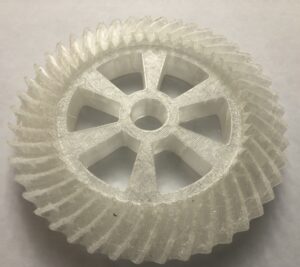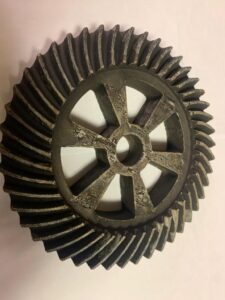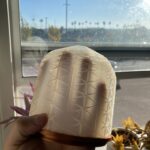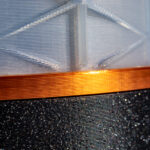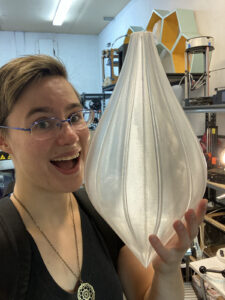Maker Pro: How the Pros Use 3D Printing in their Daily Lives for Art and Home Goods
As we learned in a previous article in this series, additive manufacturing (AM) professionals are among the most adept at incorporating 3D printing into their everyday lives. This makes it easy for every problem to look like the proverbial nail that AM can be used to hammer. However, these experts extend the use of 3D printing beyond mere practical solutions to beautify their lives.
Skuld LLC CEO and Founder Sarah Jordan more often relies on the technology for cookie cutters and toys in her personal life.
“For the cookie cutters, I use cookiecad.com which lets you upload any image and convert it into a cookie cutter STL. These hold up as long as you don’t put them in the dishwasher,” Jordan said. “The toys such, as these flexible unicorns, were part of IC3D’s Toys for Tots project which has made over 100,000 toys over the years. The toys seem pretty robust, but really the key is trying to get kids interested early. We have a variety of desktop extrusion printers and mainly use PLA.”
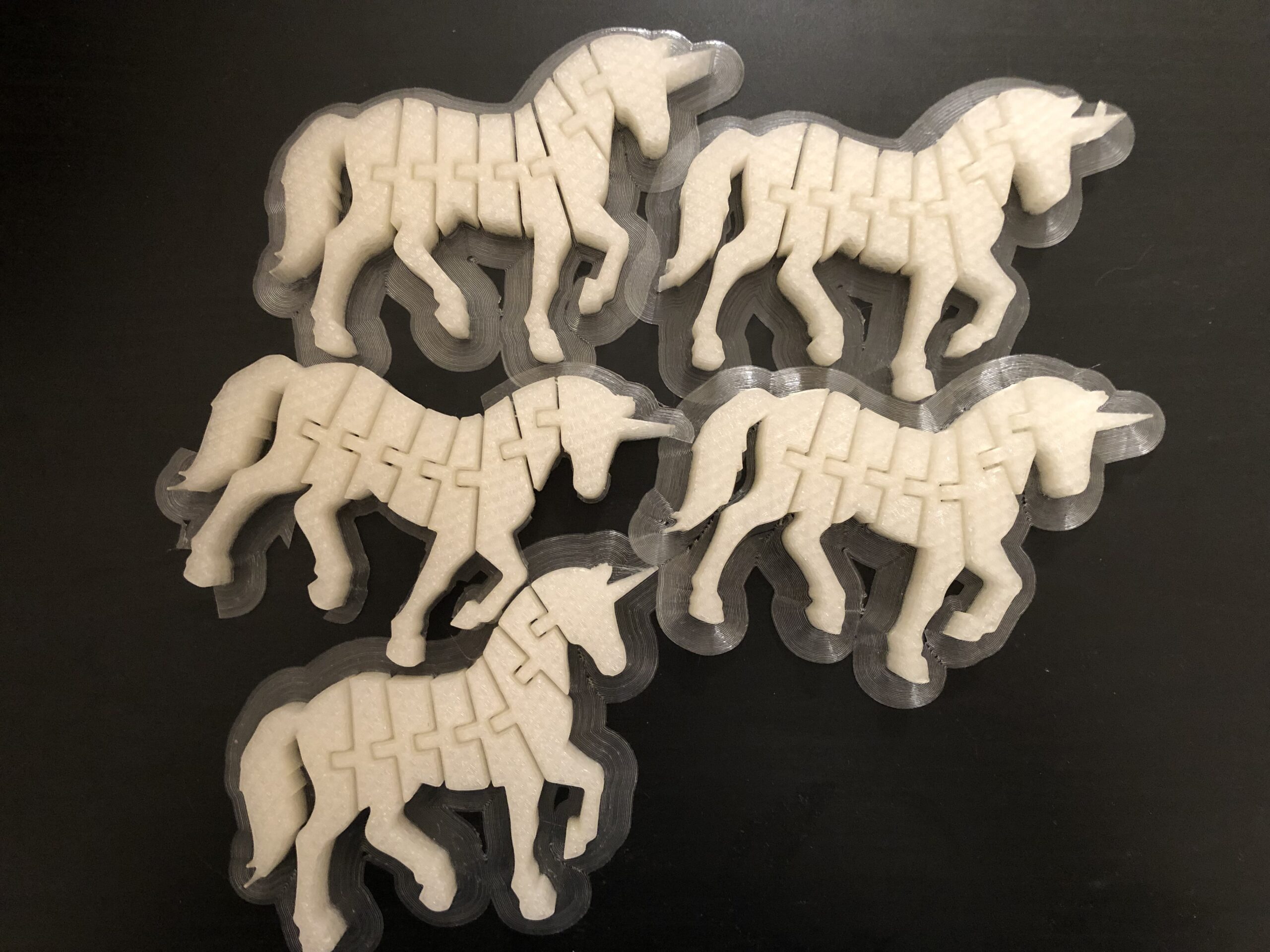
3D printed unicorns for IC3D’s Toys for Tots project. Image courtesy of Sarah Jordan.
Sarah has a unique experience with material extrusion machines. Her company, which is in the process of moving to a bigger facility, has a patent pending hybrid process that merges polymer 3D printing with lost foam investment casting.
“We use molten metal to vaporize the print to create a mold (hollow cavity) and simultaneously fill in the space where the print was. This gives you a replica in whatever metal is used such as these gears (aluminum A356).”
- 3D printed gear
- Cast in aluminum
While Jordan has turned 3D printing with material extrusion into an established business, supported by Oak Ridge National Laboratory, hobbyists now have even more access to metal AM than before. While consumer machines can print with materials for lost-wax casting, there are also filaments that make it possible to create green parts that can be sintered using furnaces (and service providers).
One AM professional, Jake, spends his waking hours in defense manufacturing. When he’s not at the office, however, he uses the two Bambu Lab printers he has at home to fix things that might otherwise be tossed. When a heavy-duty radio controlled (RC) buggy was going to be thrown out due to a broken piece that controlled the steering, Jake whipped up a printable solution.
“Otherw were lacking the design skills to model the yellow component and wait time to deliver was long, as we don’t have a local stockiest,” Jake said. “So, I took it home, modeled it using SOLIDWORKS, and printed a replacement part in PETG on my Bambulab X1C. So far, I haven’t had any issues!”
Julien Cohen, Director of Applications at Velo3D, says when it comes to what technology to use, it obviously depends on the application. He calls resin printing “an annoying messy no-good experience.” In particular, vat photopolymerization machines are useful for tabletop gaming, due to the high level of detail they can achieve.
“It’s tolerated because the resolution and surface finish of cheap DLP printers these days is just extraordinary,” Cohen said.
- “Meaningful topographic maps with fun touches and good fit/finish make lovely gifts.”
- “I made and sold a few hundred of these dragon egg planters. Real Game of Thrones era mania.”
- Snow globe-ish storage/display for a small project.
- Images in this gallery courtesy of Julien Cohen.
Anne Pauley, Technical Program Manager of Early Engagements at Google Pixel, primarily uses SLA printing to perform assembly prototyping for consumer electronics on the Google Pixel line. This includes testing assembly processes, identifying and mitigating potential DfX issues, and investigating opportunities for design and efficiency improvement.
Outside of work, Pauley has engaged in multiple non-profits, including Women in 3D Printing, where she is the San Francisco ambassador, and the Crucible, where she is a faculty member that teaches 3D printing for hybrid workflows like silicone moldmaking, ceramic shell casting, silver casting, sand casting, and plaster moldmaking.
Anne has also been involved in such exciting projects as the Iron Maven vehicle, created by Girl Gang Garage. The organization highlights the role of women in the automotive industry while also creating opportunities for women to gain hands-on skills working on ambitious builds. The Iron Maven, in particular, involved the restoration and body swap of a 1961 Volvo PV544 and a 2019 Volvo S60 Hybrid-Electric. With the help of Autodesk, Stratasys, and PADT, the build featured custom components made using FDM, SLA, and SAF.
As if all of this work with AM wasn’t enough, Pauley regularly incorporates 3D printing into her hobby of building light art, both stand-alone pieces and larger installations. This includes elements of huge metal and fire art installations she created with her artist collective, Flaming Lotus Girls. One project, “Rainbow Raindrops,” is a project that is modular and configurable so that it can fit in different space, including the Bay Area Maker Faire, where she arranged them into large helix.
- Anne Pauley with 3D printed Rainbow Raindrop
- Rainbow Raindrops assembled in helix pattern
“I print them in GreenGate3D PETG on delta printers, set up with 1mm nozzles, which allows me to print large clear layers that act like a Fresnel lens to create a unique light effect where the 50 spot LEDs look like laser beams floating inside,” Anne said.
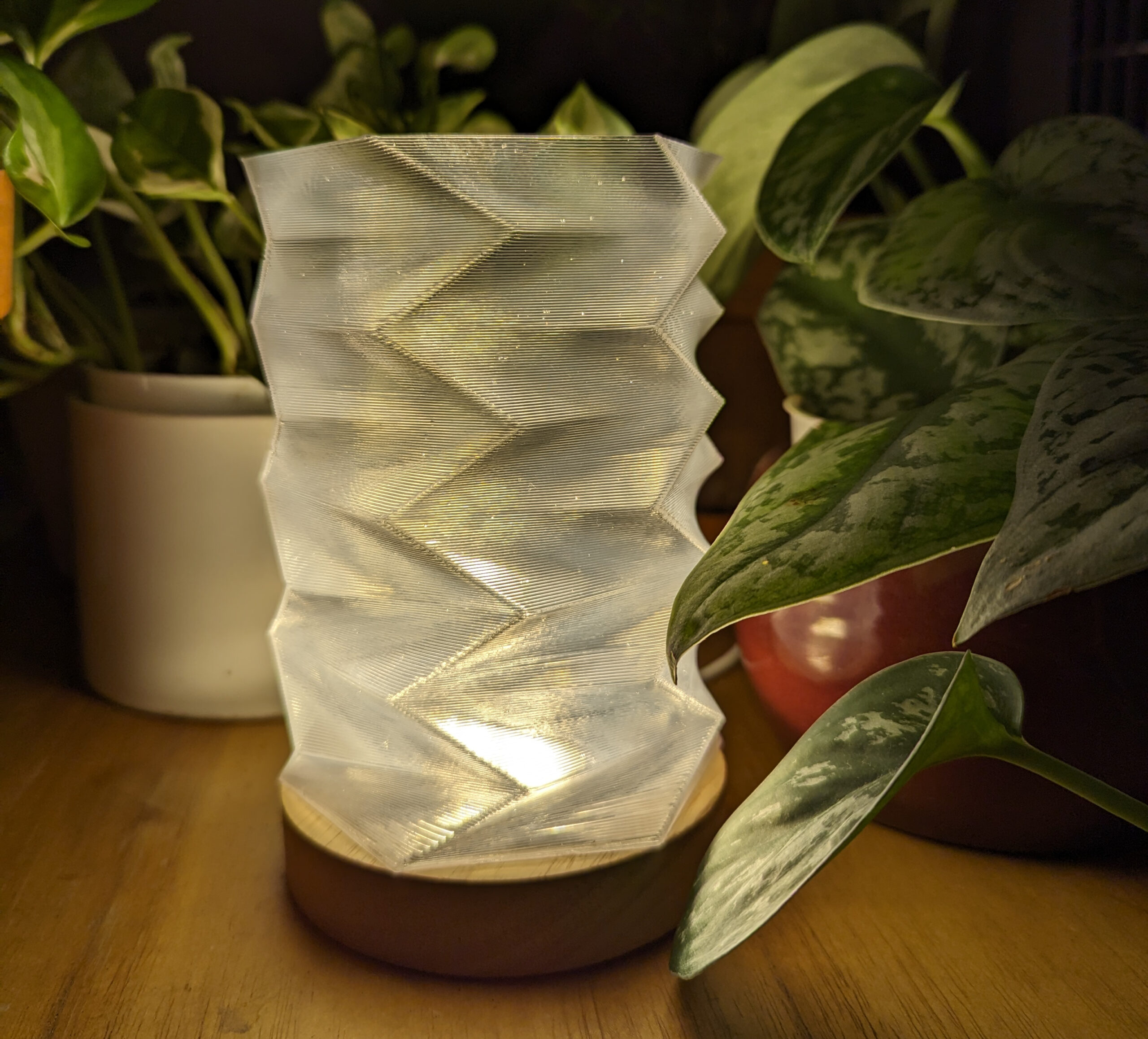
A 3D printed light from Anne’s home decor line. Image courtesy of Anne Pauley.
In addition to developing a line of artistic home lights using the same design and printing methods as the aforementioned, Pauley has also been working on model and prop-building projects. The most recent was a 2.5% scale model of the 2023 Burning Man effigy and pavilion, part of an initiative to make big art more accessible to blind and low-vision people by offering a tactile way to experience it.
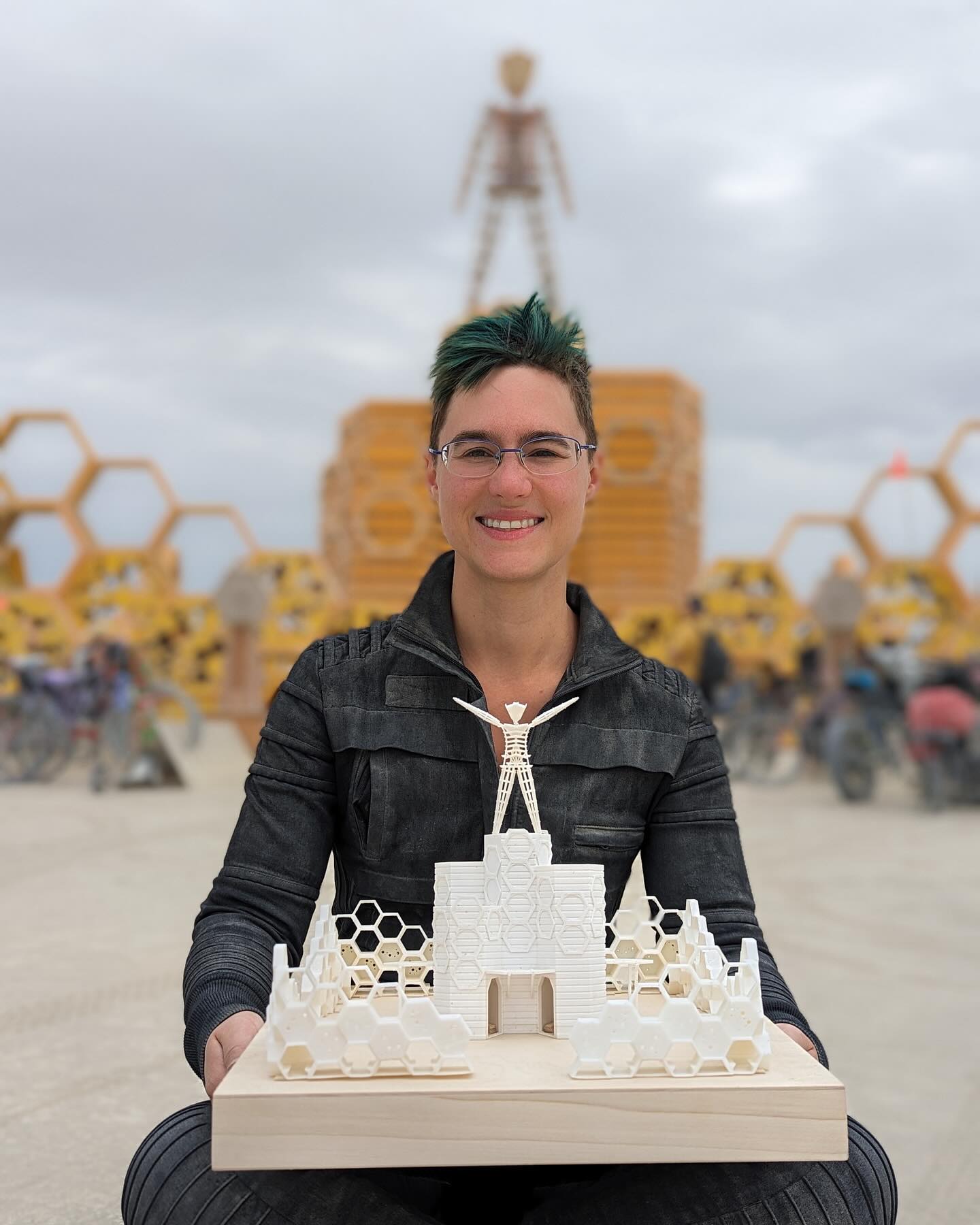
Anne Pauley with Burning Man pavilion replica. Image courtesy of Anne Pauley.
Ethan Rejto, the Director of Marketing at Mantle, shared his enthusiasm for the benefits of working at a 3D printing company, particularly the freedom to print virtually anything. As an example, he mentioned creating a custom stamp for his and Sarah Costello’s wedding invitations. Rejto acknowledged that using H13 tool steel for a wax stamp might seem excessive, but he pointed out that for their specialized focus on injection mold tooling, this material is ideal. He highlighted Mantle’s impressive achievement with inserts printed using their technology, which have completed over 1.7 million cycles and are still operational.
As AM continues to percolate beyond industry and into the homes of hobbyists, prosumers, and consumers, these expert users show the world just what is possible. We’re definitely only able to capture a handful of the broad range of designs out there from 3D printing professionals. If you’re interested in sharing your projects with us, email me at michael@3dprint.com.
Subscribe to Our Email Newsletter
Stay up-to-date on all the latest news from the 3D printing industry and receive information and offers from third party vendors.
Print Services
You May Also Like
Nanoscribe’s New Clear Material Designed for Optical Electronics
Nanoscribe has launched IPX-Clear, a Two-Photon Polymerization (2PP) material with high transparency, designed for dimensionally accurate components. Optimized for Nanoscribe’s Two-Photon Grayscale Lithography (2GL) process, this resin enables rapid production...
ESA Funds Horizon Microtechnologies’ Metallized 3D Printed Electronics Parts
German small-scale manufacturing expert Horizon Microtechnologies has received the European Space Agency (ESA)’s Spark funding to apply its specialty metallization technology to space applications. The firm believes its parts can...
Bioprinting Strategies: The Robin Hoods of Wake Forest
Rue to those aspiring to be modern-day Robin Hoods of Wake Forest: the path to riches in bioprinting is fraught with challenges. It’s perplexing that the media has not fully...
The Bioprinting Frontier: Key Trends Driving Innovation
With the release of 3DPrint.com‘s updated bioprinting world map, the dynamic shifts within the bioprinting sector come into focus. While the map shares a global view of where key companies...



